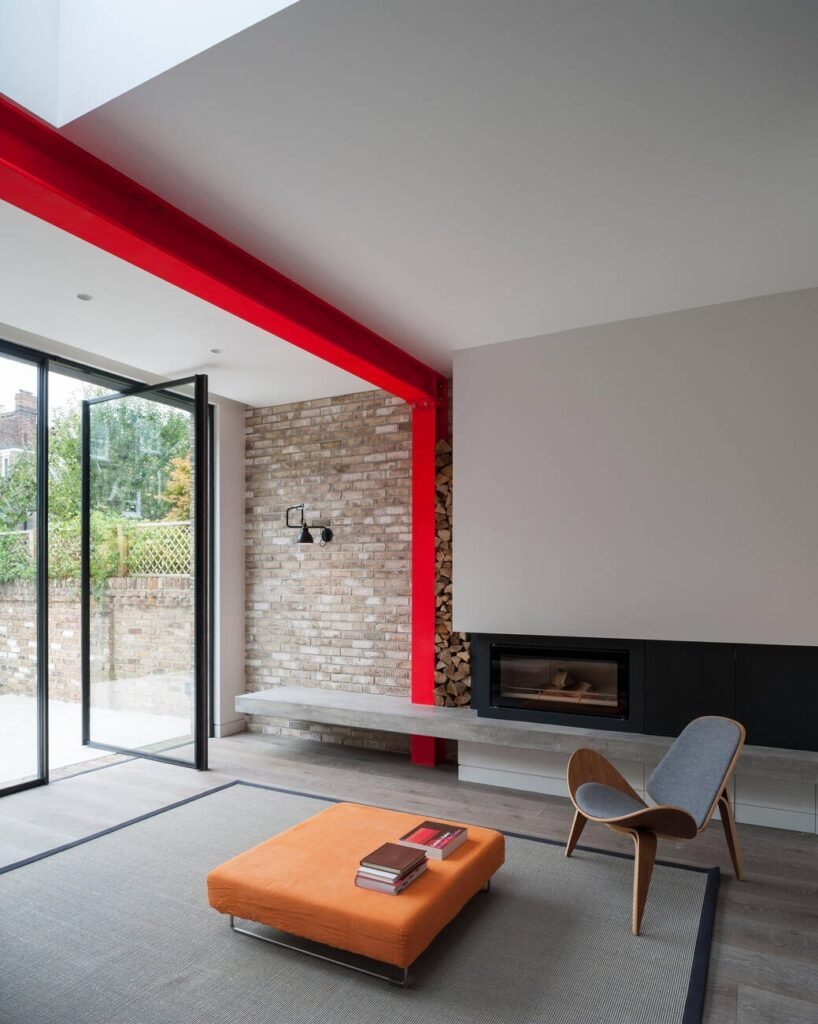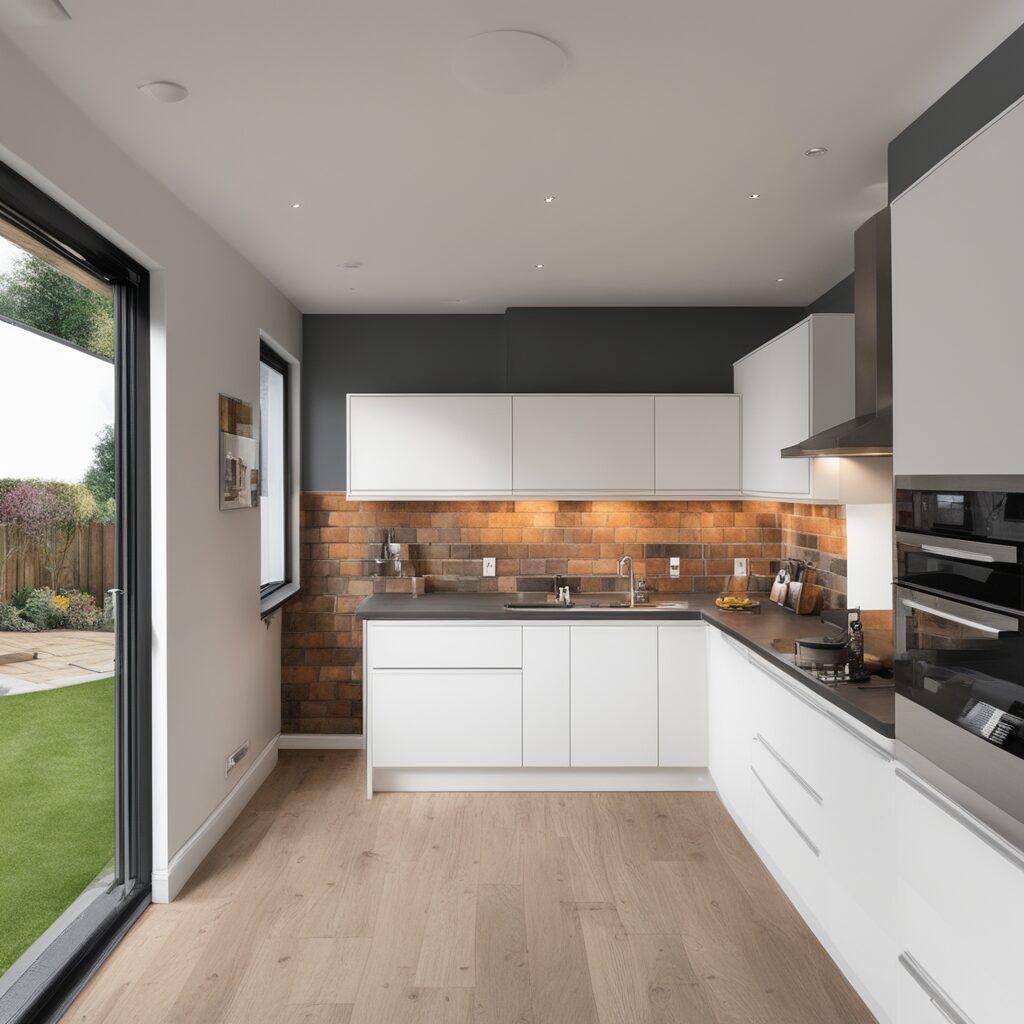Steel Beams: Reliable Guide for Extensions, Types & Costs
In the world of construction and engineering, steel beams are the unsung heroes that provide the structural integrity needed for various projects. This guide aims to be your comprehensive resource, covering everything from the types of steel beams available to their cost implications and legal considerations. Whether you’re a homeowner, a construction professional, or someone simply interested in the subject, this guide offers valuable insights into the critical role steel beams play in both residential and commercial structures.
Types of Steel Beams


The most common type of steel used in structural frames is mild steel, also known as S275. This type of steel is relatively strong, cost-effective, ductile, and easy to weld. A stronger grade, S355, is also produced in the UK; although it offers greater strength, it has the same stiffness as mild steel, which can lead to issues with structural deflection. Most steel structures utilize standard structural sections, which are produced in a range of standard cross-sectional shapes and are widely available. These sections are created by passing red-hot billets of steel through a series of rollers, transforming them into the desired profile. These profiles are then cut into transportable lengths and distributed. Each profile comes in a range of standard sizes and weights, achieved by adjusting the distance between the rollers during the manufacturing process. For those interested in a broader variety of options, a much wider range of steel sections can be found in the ‘Blue Book’.
Rolled Steel Joists (RSJs)
One of the standout attributes of Rolled Steel Joists (RSJs) is their ability to provide optimal structural support while utilizing a minimal amount of steel material. These joists come in various configurations, such as single or double beams, and offer a selection of unique shapes. For instance, ‘I beams’ are a common form of RSJs, characterized by their ‘I’ shape and flanges at both the top and bottom. On the other hand, ‘H beams’ resemble I beams but are broader and more suitable for extended lengths. ‘T beams’ lack a bottom flange, making them less expensive but also less robust compared to I or H beams; they are occasionally referred to as ‘flange beams.’ ‘C-section beams,’ or ‘channel beams,’ have an inverted U-shape. RSJs can be custom-cut to fit various weight requirements. A structural engineer’s calculations will guide your contractor in choosing the appropriate RSJ type for your specific project, ensuring you get value for your investment in steel. While concrete lintels present a more budget-friendly option, it’s worth noting that they are not advisable for supporting large spans.
Costs


Steel Beam Pricing
In the UK, the financial outlay for Rolled Steel Joists (RSJs) can vary significantly based on your location, making the following figures a general guideline rather than a definitive cost structure. For RSJ beams ranging from 1m to 5m in length and weighing up to 46kg, the material costs fluctuate between £200 and £950, with an average expense of £575. Installation charges for the same dimensions range from £300 to £750, averaging around £500. On a per-kilogram basis, the RSJ cost lies between £2.50 and £4.50, with the median price standing at £3.50.
To put this into perspective, a standard doorway RSJ, approximately 1m in length and weighing up to 46kg per meter, would incur a material cost of £200 and an installation fee of £300. Conversely, a larger 5m RSJ with similar weight specifications would cost £950 for the materials and an additional £750 for installation. It’s important to note that these estimates are based on the cost of the steel beams alone, excluding any additional elements like padstones, piers, or fabrication. The prices are also predicated on the assumption that the steel beams will be installed from below the joists and do not account for any modifications to the joists themselves or the removal of existing walls.
When assessing the RSJ cost per meter, another crucial factor to consider is the weight-bearing capacity of the joist. This will primarily influence the cost, with the average rate being £3.50 per kg.
Factors affecting RSJ costs
Several variables come into play when determining the overall expenditure for Rolled Steel Joists (RSJs). Firstly, the dimensions of the beam, including its length, thickness, and load-bearing capacity, are primary cost determinants. Secondly, if the project involves the removal of a load-bearing wall, additional expenses for relocating utilities such as electrical wiring, gas lines, and plumbing may arise. For more insights on these costs, you can refer to our guides on electrician and plumber hourly rates.
Moreover, if your project isn’t a new construction or an extension, it’s likely that wall removal will coincide with RSJ installation, adding to the overall cost. Our guide on the expenses associated with removing a load-bearing wall can provide further clarification. Accessibility is another factor; the ease with which the installation site can be reached can significantly influence the cost. Even transporting an RSJ a short distance can complicate the project and increase expenses.
Additionally, one cost-saving strategy is to handle the room’s finishing touches yourself. While you’ll still incur charges for the structural engineer and the RSJ itself, taking on tasks like plastering and painting can reduce the total outlay. Lastly, waste management is an often-overlooked aspect. Installing an RSJ, especially when coupled with wall removal, generates considerable waste, necessitating skip hire for proper disposal.
Advantages and Limitations


Why Use Steel Beams?
Steel beams serve as a cornerstone in a variety of structures, offering both safety and stability while optimizing material usage, making them an economically sound choice in construction. Their diverse shapes and sizes are meticulously designed to meet the unique demands of different projects. For instance, universal beams feature tapered edges, which are engineered to efficiently transfer heavy loads, making them ideal for horizontal load-bearing applications. On the other hand, universal columns are constructed with thicker flanges and webs, allowing them to support greater loads and making them the go-to choice for vertical load-bearing roles. The versatility of steel beams extends beyond just buildings; they are a common sight in various types of structures, from commercial and residential buildings to bridges, stadiums, warehouses, and hangars.
Potential Drawbacks
One notable drawback associated with the deployment of steel beams in structural engineering is their susceptibility to corrosion when exposed to water for extended periods, a risk that escalates in the presence of salt. While brief or minor contact with water may not pose immediate issues, long-term exposure can compromise the structural integrity of the material. To mitigate these risks, various preventive strategies can be employed, such as the application of protective coatings and strategic placement of steel components to minimize water contact. This offers a well-rounded perspective on the limitations inherent in the use of steel for construction purposes.
Load Bearing Capabilities
Universal beams serve as a highly efficient solution for carrying substantial loads, making them indispensable in a wide array of engineering and construction projects. The quality of the steel used in these beams is paramount, as it directly impacts the overall stability of the structure they support. While universal beams are generally lighter in load-bearing capacity compared to universal columns, they boast a higher moment of inertia, rendering them more resistant to bending moments induced by various construction loads. This resistance is further enhanced by the increased depth of universal beams, which also elevates their load-bearing capabilities. Therefore, accurate measurement of a beam’s depth is crucial before placing an order, as it significantly influences the beam’s ability to support weight. Whether used in commercial or residential settings, the role of universal beams in ensuring structural integrity cannot be overstated.
Legal and Professional Considerations


Building Regulations and Permissions
When embarking on a construction project, whether it’s a new structure, an extension, or modifications to an existing building, securing approval for building regulations is a mandatory step. It’s crucial to note that this is distinct from obtaining planning permission, which may also be required based on the specific nature of your project and the building involved. As the property owner, the onus is on you to ensure that the construction team adheres to all relevant building codes and regulations. In the context of using Rolled Steel Joists (RSJs), it’s imperative to submit all related calculations to a designated building control officer. This officer is responsible for reviewing and ultimately approving these calculations, as well as any preliminary plans for the construction work, to ensure they are in line with established building regulations.
When to Consult a Structural Engineer
If you’re planning significant modifications or extensions to your property, such as removing down walls or expanding your kitchen, consulting a structural engineer is imperative. They can accurately identify which structures are load-bearing and recommend the necessary structural supports. Moreover, if you’re considering a basement, garage, or loft conversion, a structural engineer is indispensable for providing crucial calculations for new floors, roofs, and staircases. These professional assessments not only ensure the structural integrity of your property but are also a prerequisite for obtaining Building Regulation approval. Additionally, structural engineers typically conduct on-site evaluations to assess loadings and review the structural soundness of the surrounding building. Should any questions arise from your building control officer regarding the design, structural engineers stand ready to offer expert advice and clarification.
Beam Calculation Costs


The financial investment required for structural engineering services, particularly for beam calculations, can fluctuate widely based on the intricacy of the task at hand. For straightforward residential endeavors, the estimated expenditure hovers around £1,000. However, for more elaborate residential projects, you might find yourself spending as much as £5,000. If your focus is on determining the costs associated with Rolled Steel Joists (RSJs), the typical fee for these calculations stands at approximately £200. Bear in mind that these numbers serve as general guidelines and may vary due to several influencing factors, such as property dimensions and the specific nature of the work involved.
Final thoughts


In summary, steel beams are an indispensable component in modern construction, offering a blend of strength, versatility, and cost-effectiveness. Whether you’re a homeowner planning a renovation or a professional involved in large-scale construction, understanding the intricacies of steel beams is crucial. This guide has aimed to provide you with a holistic view of what you need to know before embarking on a project that involves the use of steel beams. If you’re considering utilizing steel beams in your next venture, consulting a structural engineer for tailored advice is a step you can’t afford to skip.
Should you require professional assistance, don’t hesitate to get in touch with SECalcs. We specialize in providing structural calculations that are guaranteed 100% for building control approval. Your project’s success is our top priority.



- Head Office: Corwell Lane, Uxbridge, England, UB8 3DE.
- + (44) 07359 267907
- info@structuralengineercalcs.com


